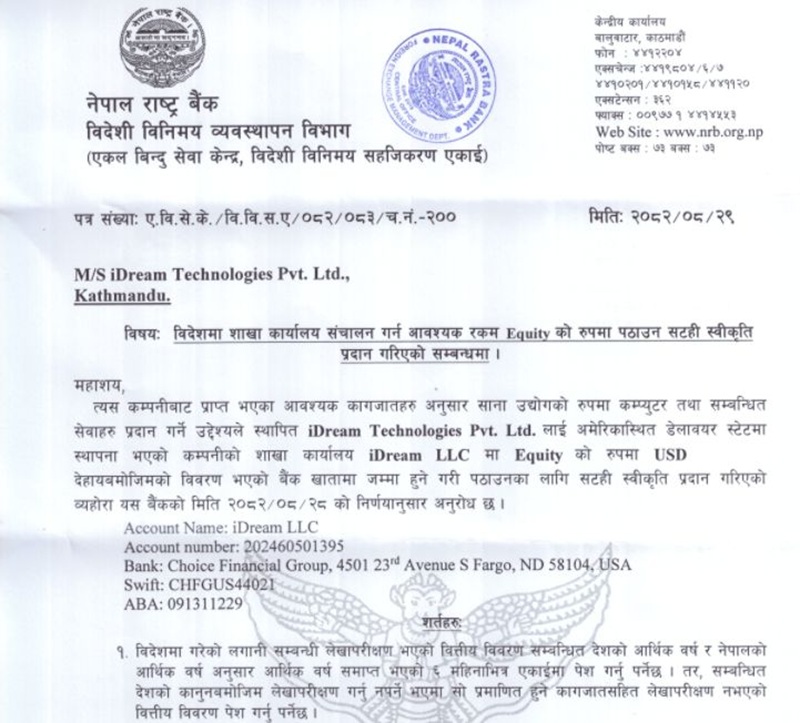Nepal Rastra Bank New Monetary Policy for FY 2081/82
8 August 2024, Kathmandu
Nepal Rastra Bank rolled out its monetary policy for the fiscal year 2081/82 on July 26, 2024. The new policy of Nepal Rastra Bank has stressed economic stability with growth. It covers several major adjustments for the solution to the existing economic problems ensuring financial stability, and promoting different sectors.
Nepal Rastra Bank New Monetary Policy
Key Provisions and Changes
Interest Rate Adjustments
The major highlights include the cut in key interest rates. The bank rate has been reduced from 7% to 6.5%, while the policy rate has been cut from 5.5% to 5%. There has been no change in the deposit rate, which remains at its lower limit of 3%. These reductions imply cheaper borrowing conditions and will make people invest in the economy.
Targets of Inflation and Economic Growth
The NRB targets keeping inflation around 5 percent and setting an economic growth target of 6 percent for the year. The policy has many measures to manage excess liquidity and stabilize prices. The target for credit growth is hiked to 12.5 percent from 11.5 percent last year to spur economic activities, especially in construction and microfinance.
Details of Sector-Specific Measures
Construction Sector
The new policy, however, has brought relief to the construction sector, whose business has been hit hard by delayed payments and liquidity problems. The repayments of loans taken by construction businesses are now extended till the end of Mangsir 2081 BS. This can check the blacklisting of contractors, who can continue their operation and complete projects.
Microfinance and Cooperative Sectors
It encourages amalgamation and merger in the case of microfinance for better financial stability. The policy caps the interest rate on loans at 15% and allows the restructuring of loans in cases of financial distress. As for the cooperative sector, it returned deposits up to Rs. 500,000 of small depositors from the promoters’ assets, thereby taking cognizance of fraud-related maladies.
Share Market and Real Estate
On the other hand, to support the share market, the policy removes the ceiling of Rs. 200 million on institutional loans against shares. However, the ceiling on individual loans remains at Rs. 150 million. Some flexibility in real estate loans is introduced to spur investment.
Start-up Promotions and Youth Entrepreneurship
Second, it allows for easy access to credit by start-ups, and young entrepreneurs. The policy provides for collateral-free loans for all borrowers going abroad for employment and farm businesses based on produce-based collateral. These initiatives will encourage innovation and generate jobs locally.
Financial Stability and Regulatory Measures
The NRB ensures that monetary policy is well-balanced, as it has to support the stability of the financial system. Such continuous monitoring concerning domestic and international economic conditions has been undertaken. The major objectives regarding monetary policy pursued by the bank are the improvement of loan quality and the enhancement of credit to productive sectors so that the health of the banking system can be improved.
External Sector Challenges—Addressing Them
Even with an improved foreign exchange reserve, due to a surge in remittances, reduced imports, and a greater number of tourists, it takes cognizance of the fact that there are challenges such as price increases of essential goods. It has emphasized using foreign exchange reserves for infrastructure development and boosting exports to sustain economic growth.
Conclusion
The Monetary Policy of Nepal Rastra Bank for FY 2081/82 has brought forward a balanced program to meet current economic challenges, focusing on the goals of achieving sustainable growth. With interest rates, support for targeted sectors, and an emphasis on financial stability, this policy will be instrumental in creating an enabling environment for economic recovery and development. Stakeholders across many sectors will be waiting for its implementation and results.








